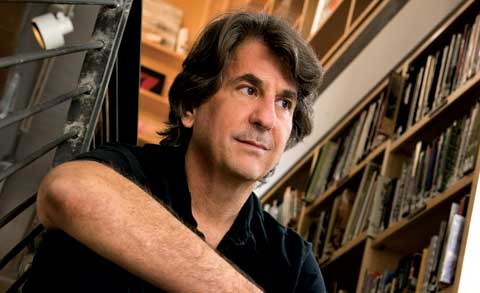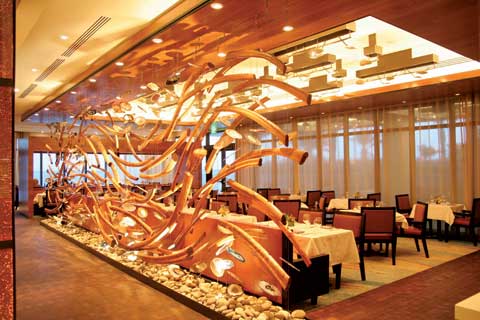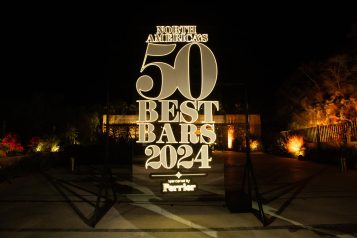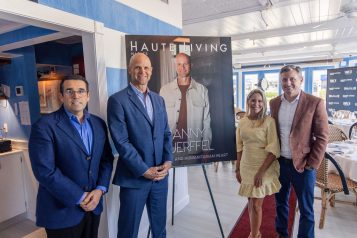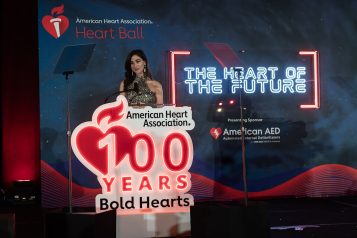Our first steps always include collaborative brainstorming amongst a group of the 150 designers in my firm, who are also artists, sculptors, chefs, opera singers, architects, playwrights, and set designers.
As the child of a vaudeville dancer and choreographer, it is his eccentric upbringing that served as the foundation for an eternal source of creativity. After mastering the fundamentals at Syracuse University and the Architectural Association in London, the genius architect went on to earn the National Design Award by Smithsonian’s Cooper-Hewitt for outstanding achievement in Interior Design, a lifetime achievement award from Interiors magazine, the Presidential Design Award for his work for the Grand Central Terminal renovation as well as being included in Interior Design magazine’s Hall of Fame. Today, the founder and CEO of the award-winning Rockwell Group, the firm behind Canyon Ranch Living, is staying busy, leading his New York team and his satellite offices in Madrid and Dubai.
Haute Living What was your main source of inspiration behind the creation of the Rockwell Group?
David Rockwell When I founded Rockwell Group in 1984, I wanted to develop my experience with and interest in theater, public spaces, and communal gathering spaces. My objective was never to create a signature style or focus, but rather to fuse all my interests into architecture and design projects that would challenge me to take risks, explore uncharted territories, and experiment with new vocabularies, materials, and techniques.
HL Having grown up amongst theater, it is presumable that you met some pretty eccentric actors and designers. Is there anyone who particularly inspired you?
DR I am humbled to have worked with some of the greatest minds in the theater, film and design worlds over the course of my career. Working on Broadway’s production of Hairspray brought together some of my greatest friends and colleagues: Jack O’Brien, John Waters, and Jerry Mitchell. It was fantastic to work with Matt Parker and Trey Stone on Team America. In the design world, Liz Diller and Ric Scofidio have been truly inspiring partners.
HL Rockwell Group has designed some of the most iconic structures in the U.S. What was your first “big” project?
DR My first commission was in 1983 for a small 40-seat restaurant called Sushi Zen in Manhattan. It was a difficult, small space, but this required us to improvise and think way outside the box. Although this wasn’t a high budget project, it was a very pivotal point in my career-the beginning of my obsession with creating memorable, celebratory restaurant spaces. If we’re talking about firsts in terms of high profile projects, for restaurants I would have to say Vong (1992), which synthesized elements of Thai and continental French culture, and the first Nobu (1994), a literal representation of nature and Japanese culture that has evolved into a long-time partnership with Nobu on many of his restaurants across the globe. For theater, it was the first freestanding performance space for Cirque Du Soleil at Walt Disney World in Florida (1999). And our first hotel that we designed was the first W Hotel (1998), located in midtown New York, for which we did the design and helped with the branding.
HL What is your most exciting project for 2009?
DR We have a lot of fun, new opportunities this year. The one that is coming up the soonest is the Oscars! I can’t reveal much about the design, to save the surprise for the audience on February 22, but it will be a totally fresh look at the design of this event. Expect the unexpected!
HL How does the design process begin for each project?
DR Our first steps always include collaborative brainstorming amongst a group of the 150 designers in my firm, who are also artists, sculptors, chefs, opera singers, architects, playwrights, and set designers. We have also recently created an Innovation Lab in our office, which functions as a mixing chamber of ideas combining our model shop, material library, and book library. It is a communal workspace that promotes collaboration, investigation, and experimentation.
HL What is your dream project?
DR Because our projects are so diverse and bring up such different challenges and rewards, it’s hard to name one dream project. A project I am extremely excited about right now is our Imagination Playground. Last July we opened our Imagination Playground in a BOX in Brownsville, NY, and we will break ground on a fixed-site Imagination Playground in Burling Slip in downtown Manhattan this January. These are the culmination of years of research, focus groups, conferences, and workshops…to create an innovative play environment with diverse materials that encourages unstructured, child-directed “free play.” Imagination Playground at Burling Slip was the first step, in collaboration with the New York Department of Parks and Recreation. For Imagination Playground in a BOX, we partnered with KaBOOM!, a renowned not-for-profit organization that is committed to bringing play back into the lives of children.
HL Who is your mentor?
DR The creative minds who have most influenced and inspired me have been Charles and Ray Eames, Antoní Gaudí, Luis Barragan, Andy Goldsworthy and Boris Aronson.
HL Where did the idea to open a satellite office in the Middle East stem from? Any additional international plans?
DR It was such a success to open our first satellite office in Madrid in 2005, in order to be closer to our clients in Europe. Having a central location for our existing and future projects in Asia, India, and Africa was also crucial. Dubai is such a hotbed of design and building, so we chose that to be our hub for the surrounding regions.
HL Where do you see the Rockwell Group in the next five to 10 years?
DR We want to continue to break down the boundaries between all the design disciplines, bridging the gap between hospitals and spas, restaurants and cooking schools, and bringing in as many talented collaborators from a variety of fields and backgrounds as possible. I also want to further experiment with and explore new materials and production techniques in innovative ways.







